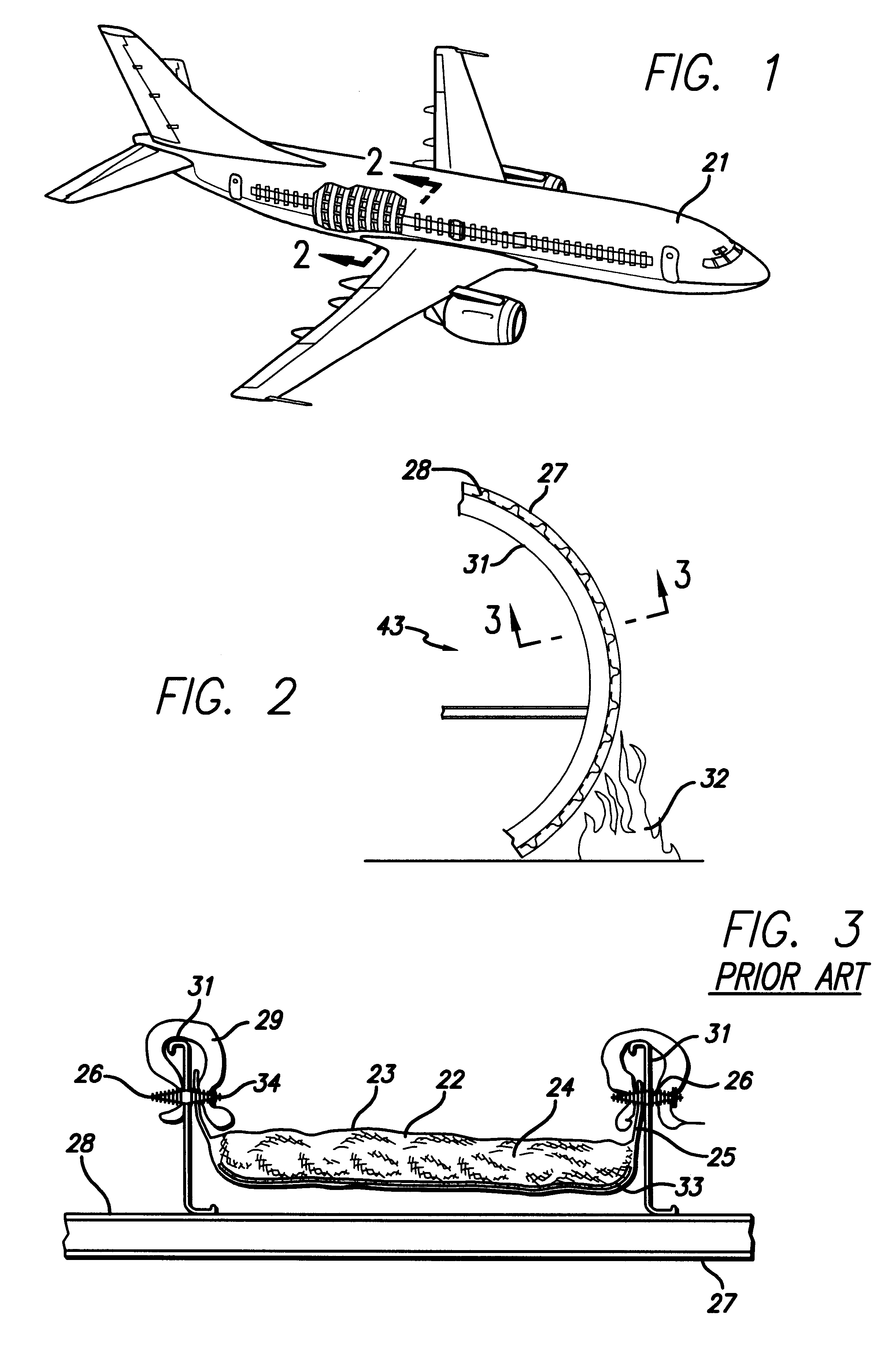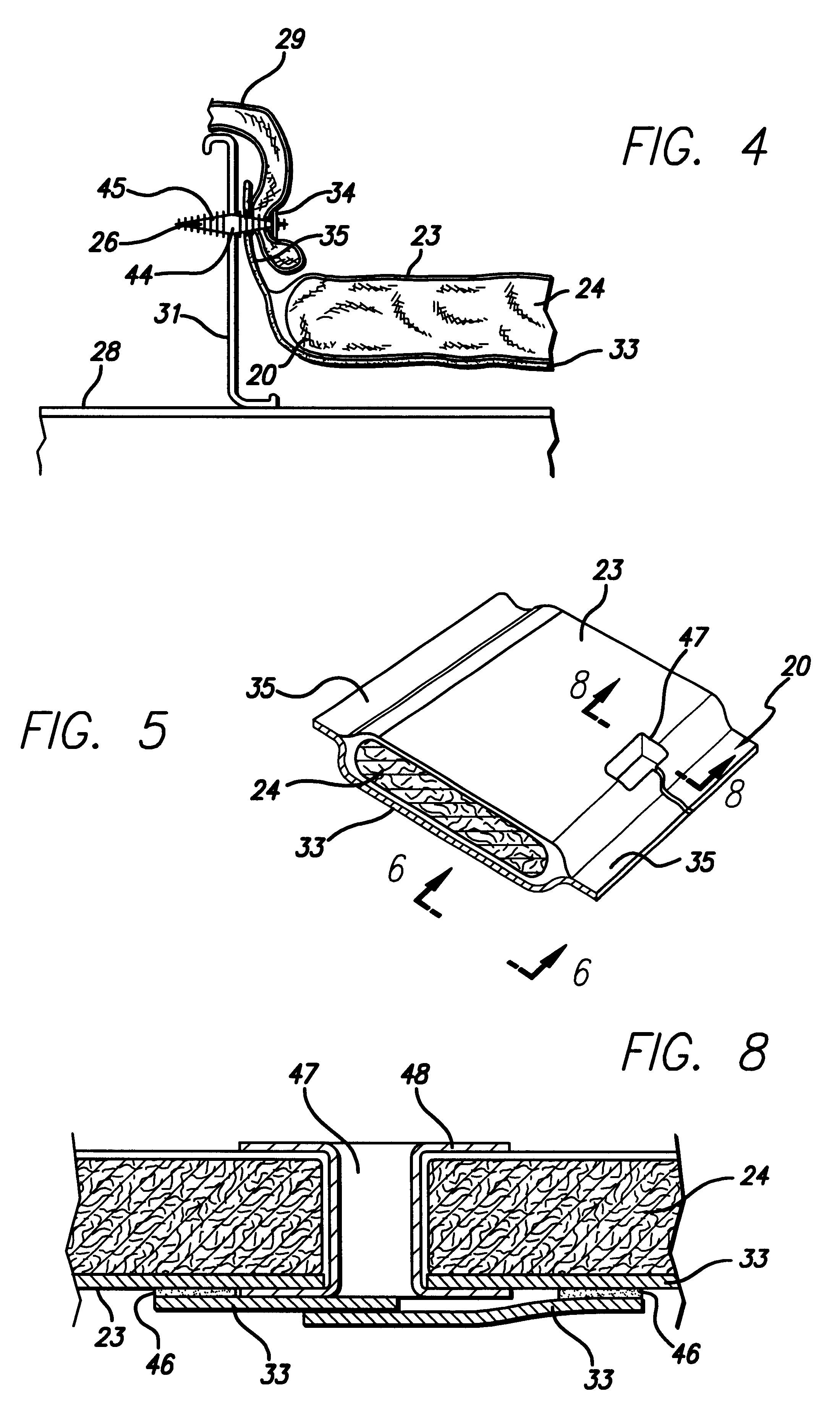Fire-blocking insulation blanket
a technology of insulation blankets and fire-blocking blankets, which is applied in the field of aircraft-type insulation blankets, can solve the problems of reducing the effectiveness of fire-blocking insulation blankets, fuel spilling from aircraft and igniting, and perishing in fire, so as to reduce the cost of retrofitting existing aircraft, improve fire-blocking properties, and protect the
- Summary
- Abstract
- Description
- Claims
- Application Information
AI Technical Summary
Benefits of technology
Problems solved by technology
Method used
Image
Examples
example 1
Blanket Construction.
A piece of lofted insulation comprised of 2 inch thick 0.42 pcf MICROLITE.TM. AA Fiberglass from Johns Manville Corporation of Denver, Colorado was cut to the dimensions approximately 20 inches wide and 36 inches long. A piece of fire-blocking material comprised of CURLON.RTM. OB-5250G, nominally 0.25 inches thick, from ORCON Corporation of Union City, California, was cut to dimensions approximately 28 inches wide and 36 inches long. Two pieces of protective covering comprised of reinforced polyimide film available under the trade name ORCOFILM.TM. KN-80 from ORCON Corporation of Union City, Calif. were cut to dimensions approximately 32 inches wide and 40 inches long. The lofted insulation and fire-blocking material were stacked and centered with respect to each other, leaving 4 inches of fire-blocking material protruding from each edge of the lofted insulation. The stack of lofted insulation and fire-blocking material was placed between the two pieces of cover...
example 2
Screening Test for Fire Blocking Materials
Materials were screened for fire blocking properties using the following laboratory scale test. A specimen holder was constructed from two pieces of aluminum sheet material approximately 0.10 inch thick. Each piece was approximately 13 inches square. A circular hole approximately eight inches in diameter was cut in the center of each piece of sheet aluminum. One of the pieces was mounted horizontally to laboratory test stands using laboratory clamps, about 24 inches from the base of the test stands inside of a laboratory hood. An adjustable propane torch, Model TL-44 from TURBOTORCH.RTM. of Denton, Tex. , was connected to a compatible propane bottle with a shut-off valve. The torch was mounted on a laboratory stand. The nozzle was mounted using a laboratory clamp so that the nozzle of the torch was directed vertically upwards, underneath and directed at the center of the hole in the aluminum piece. The upper end of the torch nozzle was about...
PUM
| Property | Measurement | Unit |
|---|---|---|
| density | aaaaa | aaaaa |
| density | aaaaa | aaaaa |
| densities | aaaaa | aaaaa |
Abstract
Description
Claims
Application Information
 Login to View More
Login to View More - R&D
- Intellectual Property
- Life Sciences
- Materials
- Tech Scout
- Unparalleled Data Quality
- Higher Quality Content
- 60% Fewer Hallucinations
Browse by: Latest US Patents, China's latest patents, Technical Efficacy Thesaurus, Application Domain, Technology Topic, Popular Technical Reports.
© 2025 PatSnap. All rights reserved.Legal|Privacy policy|Modern Slavery Act Transparency Statement|Sitemap|About US| Contact US: help@patsnap.com



